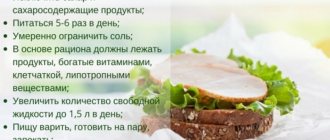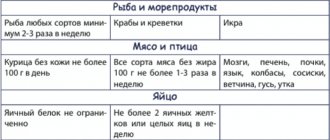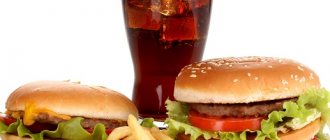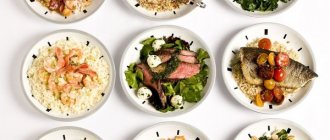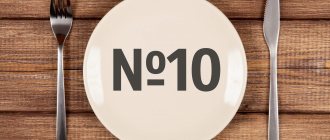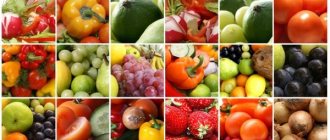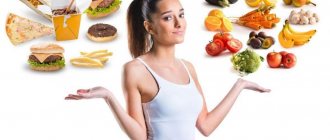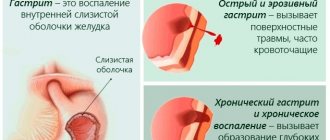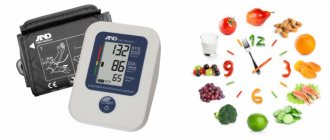A hypoallergenic diet is an effective reduction in the allergic load on the body. Its essence lies in the complete exclusion of highly allergenic foods. Also, the selection of this diet can be used during lactation to improve the quality of breast milk.
Recommended special diet for skin allergies
As all experts note, if your skin is affected by an allergy, you should immediately consult a doctor.
It is recommended to adhere to a certain nutritional system, which includes following a diet.
This food is called hypoallergenic. To understand what this diet is, you need to understand its essence in detail.
Specialists include the following features of this diet:
- The patient's diet should include a predominance of foods with a low content of allergens. This will greatly reduce the likelihood of developing allergic reactions by eliminating the factors that provoke them.
- It is recommended to exclude from the diet foods with a high potential for sensitization.
- When feeding a patient with manifestations of allergies on the skin, one should try to maintain the energy value of foods at the same level. This will prevent the creation of an imbalance in nutrition, which will reduce the number of factors that provoke an exacerbation of the allergic reaction.
- It is important to take into account the characteristics of patients. This applies to age.
The selection of a diet for a person who has skin allergies is carried out by a doctor based on his characteristics, taking into account the presence of other diseases, in order to balance the patient’s body.
Food diary: what is it?
There are situations when it is quite difficult to identify a food allergen. Of course, you can get tested and undergo an examination. But even skin tests do not give 100% results. In this case, a food diary will help. You can write down all products in a regular notebook or use special computer programs. Items that a diary should include:
- meal times;
- directly the products that were consumed;
- portion size;
- time of onset of the allergic reaction;
- description of symptoms;
- the product that caused the allergy.
Tips for properly keeping a food diary:
- Write down all food daily, including snacks.
- It is better to follow a diet while keeping a diary.
- If a reaction occurs to several foods at once, there is no need to eliminate them all. It is better to try to eliminate them one by one, thus finding out which product is the most allergenic.
- If an exacerbation coincides with the ingestion of a probable allergen, you need to exclude it from the diet for 2 weeks and observe the body’s reaction.
- After the symptoms disappear, you can try gradually introducing the allergen into the diet. Sometimes there are cases when the reaction no longer appears.
- The diary must describe the product in detail. For example: chicken meat, Borodinsky bread, baked milk. It is advisable to describe in detail the composition of each dish.
- It is necessary to record the result after discontinuation of the product.
- When buying provisions, you need to read the labels carefully. Sometimes a probable allergen may be hidden under a different name. For example, egg white is referred to as albumin.
The records will help the doctor make a diagnosis. A food diary will be useful not only for allergy sufferers, but also for healthy people. It is recommended to record the amount of water you drink per day. To fully study your diet, 2-3 weeks of keeping a diary will be enough. Allergy sufferers need 2-3 months to formulate a nutritional system and change habits.
Sample menu for the week
If you follow a diet, there will always be results in getting rid of allergy symptoms on the skin. Stick to a sample weekly menu. The basis of the diet menu should be food products that experts classify as low-allergenic.
This category includes:
- Dairy products in the form of, for example, fermented baked milk or kefir.
- Any mineral water. It just needs to be without gas.
- Beef and pork varieties. To ensure that the meat is low in fat, it is recommended to eat it boiled.
- Greens in the form of parsley, dill and other herbs.
- Some vegetable crops, such as turnips or cabbage.
- Olive based oil.
- All fruits, without exception, are dried.
- Dishes based on liver or kidneys.
The use of this set should be balanced throughout the week.
This will allow you to achieve the following results:
- The occurrence of allergic reactions is significantly reduced.
- Cell activity decreases.
- Metabolic processes in the patient’s body are stabilized.
These products must be used in the menu in proportions appropriate to the age and weight of the person. You need to undergo a preliminary consultation with a nutritionist.
It is recommended that people who stick to their diet keep a diary in which they should write a list of the foods they eat every week.
There are six columns in this diary:
- Name of the day of the week.
- Approximate meal times indicating a specific set of products.
- Components that are included in the meal.
- The method by which the dish is prepared.
- Storage of products (their conditions).
- Manifestations of an allergic reaction on the skin.
You should keep a diary for a couple of months, following the rules:
- Compliance with all the specialist’s instructions in strict sequence.
- Rapid exclusion from the diet of foods that intensify the manifestations of allergies.
It is necessary to adhere to some features when preparing dishes from the permitted set:
- Most dishes should be cooked boiled. It is necessary to avoid adding salt to them.
- When cooking meat and fish, it is necessary to change broths 2 or 3 times.
- The temperature when preparing this food should be between 15 and 60 degrees Celsius.
- Boil eggs for 15 minutes.
- If necessary, you need to grind food according to the individual instructions of a specialist.
Approximately the menu for the week could be like this:
- On Monday you can have oatmeal for breakfast. For lunch it is better to have vegetable soup and beef. Dinner can consist of rice and a steamed cutlet. Tea can be used as a drink.
- On Tuesday you should eat a sandwich with cheese and butter for breakfast. For lunch it's vegetable soup. For dinner, mashed potatoes.
- On Wednesday, breakfast consists of coleslaw with olive oil. Lunch: low-fat meatball soup. Dinner - pasta.
- On Thursday for breakfast you should eat a pear and apple salad dressed with yogurt and juice. Lunch is dumplings with cherries and potatoes. Dinner: buckwheat porridge and tea.
- On Friday for breakfast - cottage cheese casserole. For lunch, milk soup. Dinner consists of stewed cabbage and tea.
- On Saturday, breakfast consists of oatmeal with boiled meat. For lunch you can eat boiled fish. For dinner - rice porridge with meatballs.
- On Sunday, breakfast consists of oatmeal porridge. Lunch - minced dumplings based on lean beef. For dinner, it is better to eat pasta casserole and drink tea.
Key Nutrition Principles
A hypoallergenic diet is an effective therapeutic measure. A nutritionist will help you select individual nutrition based on anti-allergenic products and create a special menu.
Basic principles of the diet:
- Proper eating regimen. Fractional nutrition is recommended; it is based on dividing food into 5-6 meals. This diet prevents overeating, reduces the load on the gastrointestinal tract, and increases the quality of food breakdown in the intestines. Allergy sufferers often lose their appetite, and split meals can eliminate this problem.
- Product processing. The best way to prepare low-allergenic dishes is steaming or boiling. You should forget about frying, baking and other types of cooking. It is important to regularly change the water when preparing broths with meat and fish to reduce the amount of allergens released. It is recommended to change the water three times per preparation.
- Drinking regimen. A hypoallergenic diet always involves drinking plenty and frequently. 1-2 hours after eating, you should drink a lot of water. In general, you need to consume 2.5-3 liters per day - this speeds up the process of removing allergens and toxic compounds from the body.
- Alcoholic drinks. A hypoallergenic diet does not allow for the consumption of alcoholic beverages. Alcohol reduces the speed of digestion and reduces the absorption of nutrients, and accordingly allergic manifestations worsen.
- Temperature. Hypoallergenic products are recommended to be consumed warm; their temperature should be at least 25°C. When eating cold or excessively hot food, irritation of the gastrointestinal tract occurs, and, accordingly, the risk of unwanted reactions of the body increases.
Article on the topic: Allowed foods to eat if you have allergies
A hypoallergenic diet is indicated for adults for 14-21 days. For children, the duration of the diet can be reduced to 7-10 days.
Important! New foods are introduced into the diet one by one (a new component every 2-3 days) to determine the body’s reaction.
Allergic foods should be recorded in your personal diary. The doctor, after looking at the records, will be able to identify intolerance to one or another component. It is also worth noting that for allergy sufferers, the method of consuming fresh or steamed vegetables and fruits is the best way to obtain vitamins and fiber.
Hypoallergenic products are an essential part of the diet. When preparing dishes from a variety of ingredients, the process of identifying the allergen becomes more complicated. With prolonged monotonous consumption of dishes, the accumulation of certain substances occurs; if one of them is an allergen, there is a high probability of developing severe allergic reactions.
Necessary dietary table
For the adult population, menus for allergies are drawn up taking into account the following principles:
- It should be developed taking into account the fact that the diet consists mainly of plant foods.
- It is necessary to ensure that a sufficient volume of fluid enters the body. This will quickly free it from toxins that accumulate in the digestive organs.
- Consume mostly freshly pressed juices and rosehip-based decoctions. Compotes should not be sweet.
- Recommended dishes are prepared using a minimum set of spices.
- Avoid eating garlic, horseradish, mustard and pepper. These components provoke the patient to develop symptoms in the area of intolerance.
This hypoallergenic menu should be followed for several days. Based on the doctor’s recommendations, the diet is gradually expanded.
Can diet replace treatment?
Diet for allergies in children and adults can only be a component of complex therapy, but not a substitute for it.
In addition to creating an optimal diet, it is strongly recommended to limit contact with other potential allergens; this rule is true for cats and dogs, upholstered furniture and other provoking factors.
Drug treatment is also of particular value because it reduces the likelihood of complications, but the entire range of therapeutic measures is important. A special hypoallergenic diet, conservative treatment, and exclusion of provoking factors together help in the treatment of an allergic disease, for example, when it comes to urticaria.
Diet in food form
In order to correctly prescribe a diet during a food allergy, you must first find out the foods that provoke it. You need to consult a specialist who will conduct the necessary testing.
You will need to undergo a series of tests. The doctor will prescribe an individual diet for the patient.
One of the most effective methods is skin type testing. The method allows you to quickly find out which product may cause discomfort in the patient.
There are products whose use is undesirable, and those that need to be included in the diet.
Permitted for use:
- All products are lactic acid type.
- Lean type meat.
- A number of fish varieties.
- Vegetables that have a green color along with potatoes.
- Some types of fruits.
- Vegetable oil along with cereals and breadcrumbs.
- Various compotes based on dried fruits. Just don’t eat rose hips and red berries.
- Tea of any kind and mineral water without carbon.
At the first positive manifestations as a result of the diet, you cannot stop. It is necessary to undergo an additional consultation with a doctor so that he can determine which of the products can be introduced into the diet.
Allergenic foods for children
In childhood, an immature body can react more quickly to the potential danger of allergies. Therefore, the first manifestations of diathesis in children may occur even with the introduction of the first complementary foods. Allergenic foods for children are whole milk and egg yolk. Among fruit and vegetable products, tomatoes, pumpkins, carrots, beans and individual fruits are dangerous. You should also be very careful when introducing fish into a child’s diet, because... most of its varieties are also on the list of allergenic products for children.
Hypoallergenic or elimination type
At this point, there is a diet called hypoallergenic, and there is also an elimination type.
It is used when it is known for sure that the allergy is developing due to food.
The type of food is used after identifying the main allergen that provokes the development of reactions.
- You need to completely remove foods that may contain at least a small amount of the allergen from your diet.
- There is a taboo on eating foods that have a high probability of causing allergies. This often applies to fish with chocolate, citrus and honey.
- It is important to include foods high in fiber in your diet. For example, these will be fruits and vegetables, bran and whole grain foods.
Treatment and nutrition tips
To relieve allergy symptoms, you should follow an elimination diet, that is, completely eliminate the allergen from the diet. If you are allergic to pollen or insect stings, diet is necessary to reduce the risk of cross-allergy. Some nutrition tips:
- It is necessary to eat freshly prepared food. When stored in the refrigerator, they begin fermentation processes, which can cause a rash and other symptoms.
- Adults need to eat no more than 5 times a day, children - no more than 8.
- A diet for facial allergies should include foods rich in proteins, carbohydrates and fats.
- After complete recovery, the allergenic product can be tried gradually and introduced into the diet.
- It is advisable to cook porridge in water.
- You can use familiar recipes, from which you just need to remove the allergen.
- It is recommended to avoid salt.
- The daily amount of calories is no more than 3 thousand.
- You should drink at least 2 liters of purified water per day.
- At the initial stage of treatment (the first two days), it is better to refuse food altogether.
- First courses should be vegetarian, and meat should be steamed or baked in the oven.
- It is necessary to adhere to a hypoallergenic diet only during the period of exacerbation and treatment.
- Alcohol in any form is strictly prohibited;
In addition to following a diet, allergy sufferers need to take medications to eliminate symptoms. Among them:
- antihistamines;
- corticosteroids (in severe cases);
- sorbents.
After the course of therapy, you can return to your usual diet. But in any case, nutrition should be varied, balanced, rich in vitamins and microelements.
Reaction to gluten
The following are allowed for consumption on this diet:
- Fish and poultry.
- Chicken eggs.
- Dairy products, except cheese and cottage cheese.
- Fruits with vegetables.
- Nuts along with seeds.
- Legumes.
- Millet with buckwheat and rice.
- Potato flour and corn.
Cannot be used for food:
- Bread and pastries.
- Chocolate with candies.
- Yogurts with ice cream.
- Pasta and wheat bran.
- Beer, chips and soda.
- Butter with margarine and cottage cheese.
- Milk in any form.
- Cold meats and cheeses.
- Mayonnaise, crab sticks and wheat porridge.
As recipes for dishes that can be prepared with such a diet, we should highlight:
- Meat boiled in unsalted water.
- Fish that is pre-cooked.
- Mashed potatoes without butter or milk.
- Boiled buckwheat with rice or beans.
- Vegetable or fruit salads using olive oil.
Minimum degree of allergenicity
Now let's talk about which products are the least allergenic. They are unlikely to provoke a serious reaction in the form of anaphylactic shock, but they may well cause unpleasant rashes on the body. Therefore, it is still necessary to know them and treat them with caution. So, the list:
- spinach, both raw and stewed
- prunes, including as an integral part of other dishes
- sweet and sour apples in any form
- broccoli, including after heat treatment
- lamb of any method of preparation
- green peas (fresh and canned)
- white cabbage (both fresh and cooked)
- horse meat in any form
- dairy products
- tea (black and green)
- yellow cherries, including canned ones
- zucchini any way of cooking
- cucumbers
- millet porridge
- pearl barley, including in soups
- gooseberries (in compotes and jam too)
- squash
- dried apricots
- all yellow plums
- salad of almost all varieties
- vegetable oil (especially sunflower)
- turnip in any form
- pumpkin
- dates (generally a very dangerous product, because they can be chemically treated for storage)
- white currants in any form
- melted butter
- cauliflower in any form
- green bean
Nutrition for asthma in adults
Doctors recommend the following as the main approved products:
- Yogurt or kefir.
- Various cereals.
- Lamb with chicken, lean beef.
- Cabbage with green peas, legumes and pumpkin with herbs.
- Berries and fruits that are not red in color.
- Fresh juices based on such fruits.
- Refined vegetable oil, a clarified variety of butter.
Doctors advise excluding the following foods from your diet:
- Meat type broths.
- Fried and spicy foods, pickles.
- Liver and seafood.
- Cheeses and sausages.
- Radish with greens.
- Soda with tea and coffee.
- Sweets made from chocolate and honey.
What foods are allergens?
The word “allergy” is associated with foods such as chocolate and tangerines. In fact, different parts of the Earth have their own ratings of the popularity of certain allergens. For example, Aboriginal people have virtually no reaction to chocolate. Domestic medical practitioners claim that there are foods that most often cause allergies.
Cold allergy: symptoms and treatment, preventive measures
What can you eat if you have skin rashes?
If a person has a skin allergy, they must follow a certain diet. There is a certain set of foods whose consumption is undesirable.
Nutritionists usually call products highly allergenic components. These products help increase the level of sensitivity of immune system cells to provoking factors.
The process of releasing chemical substances is initiated, which stimulate the occurrence of allergies in humans.
According to studies, nutritionists in the presence of allergies include the following products as prohibited foods:
- Seafood of various origins.
- Various types of honey.
- Milk from cows and goats.
- Chicken eggs.
- Berries and fruits that are red or orange in color.
- Drinks based on coffee or coffee.
- Drinks of various types that contain alcohol.
- Everything is based on cold and hot smoking of fish or meat.
- Chocolate in any form.
- Various types of spices, seasonings and sauces.
- Mushrooms and dishes based on them.
- Various types of nuts.
If patients try to exclude this set of foods during the diet, or at least reduce their consumption to a minimum, this will contribute to recovery.
Experts and patients note a significant reduction in skin manifestations. For example, swelling and itching are minimized. There is a faster reduction in the rash on the patient's skin.
There is also a set of foods whose consumption should be minimized. Products are called moderately allergenic, and they can lead to allergic reactions.
The following ingredients fall into this category:
- Cereals of various types, including rye and wheat.
- Certain grains. Among them, cereals based on corn and buckwheat are often noted.
- Decoctions based on herbal products.
- All legumes without exception.
- Peaches with bananas, watermelons.
- Potatoes in any form.
As folk remedies that help fight skin rashes, we can recommend:
- Taking baths based on therapeutic mud and sea salt.
- Naturally based juices from beets and carrots.
- Decoctions from spruce buds.
- Decoctions based on herbal teas - sage, St. John's wort, yarrow and juniper.
- The use of propolis and rosehip decoction with celandine.
- Lotions with chamomile and string.
- Sea buckthorn oil.
- Jerusalem artichoke tincture.
- Compresses based on black tea and chamomile.
- Wipe the affected areas of the skin with vodka or alcohol.
- The use of ointments based on Vaseline or tar.
Anti-allergy products with antihistamine effect
An antihistamine is the first drug that a patient takes at the first symptoms of an allergy. But we should not forget that long-term use of medications has a bad effect on the liver and causes side effects. In particular, second generation antihistamines provoke pathologies of the cardiovascular system. Therefore, it is better to use natural methods for treating hypersensitivity, and a special diet will help with this. Non-allergenic products will help relieve signs of an allergic reaction:
- Broccoli. Cabbage eliminates signs of allergies thanks to vitamin C, which it contains in large quantities. Broccoli also thins the blood and cleanses the body of toxins. The daily dose is 80 mg per day. Cauliflower and white cabbage have similar properties. Allergies to broccoli often appear in children during the first feeding period.
- Turmeric. This spice is simply a storehouse of useful substances. The “golden milk” recipe is widely popular. The spice relieves allergic reactions thanks to the antioxidant curcumin. Also has an anti-inflammatory effect. Turmeric, as a medicine, is taken one tablespoon per day.
- Fatty fish. Thanks to the large amount of omega-3 fatty acids, this product reduces inflammation and protects the body's cells. In addition, salmon, mackerel and sardines strengthen the heart muscle and improve memory.
- Nettle. The plant contains many useful vitamins and relieves the symptoms of hay fever. Nettle is used in salads and soups, and drunk as tea.
- Apples. This fruit contains a substance that blocks the production of histamine. Research by American scientists has proven that children whose mothers ate apples and fish during pregnancy are less prone to allergies and asthma.
Other anti-allergy products:
- pumpkin seeds;
- yogurt;
- kefir;
- sauerkraut;
- onion;
- garlic;
- parsley;
- a pineapple.
Citrus fruits, which are considered quite allergenic foods, also relieve signs of a reaction thanks to the vitamin C in their composition. Of course, before you indulge in fruits, you should do an allergy test so as not to cause even more harm to your body.
General recommendations from nutritionists
A diet for allergies involves not only the exclusion of certain foods, but also a special hypoallergenic diet, as well as adherence to certain cooking technologies.
Such meals should be fractional, in small portions and up to 6 times a day. Dishes should mainly be boiled, baked or stewed. Good heat treatment destroys most allergens.
For lunch, it is definitely recommended to eat low-fat vegetable soup; this dish is good for the gastrointestinal tract, helps improve their functioning and normalize digestion. It is necessary to drink as much as possible while following a hypoallergenic diet, but only if there is no swelling.
After the signs of allergy disappear, it is recommended to introduce new foods once every three days. First, it is recommended to consume foods with a moderate degree of allergenicity and only after them introduce those that are more likely to cause illness.
At this time, it is imperative to record all changes in well-being, which will allow you to find the true allergen.
When an allergenic product is identified, an individual elimination diet is prepared for the patient, with the permanent exclusion of the provoking food and the limitation of those dishes that can cause a cross-allergic reaction.
https://youtu.be/BMU6z509_9A
https://youtu.be/VvEb55vBf40
Diet for nursing mothers
The portion of a nursing mother should be filled with vitamin complexes and minerals. Therefore, you need to eat as much as possible of fresh fruits and vegetables (green or yellow in color) allowed by the hypoallergenic diet; this is a prerequisite for the nutrition of a nursing mother.
Attention! It is necessary to completely eliminate overeating, since the remaining food will not be digested by the body, but will begin to deform into toxins, which will poison the body from the inside.
Products containing large amounts of protein should be combined with vegetables, this will help prevent allergenic particles from entering the blood plasma. This anti-allergic technique will be useful not only for nursing mothers, but also for children.
Citrus
One of the most common causes of allergies is the consumption of exotic citrus fruits: oranges, tangerines, lemons, pomelo, grapefruits. This is caused by the lack of the required amount of enzymes for the body to assimilate overseas products. The role of an allergen is a protein compound with high antigenic activity. The immune system is also hostile to the chemicals with which fruits are treated to extend their shelf life and preserve their presentation.
Very often, citrus fruits become a strong allergen due to the development of mold and mildew on the fruit during improper storage. An additional factor in the pathogenic reaction may be a genetic predisposition to allergies, immunodeficiency, or problems with the functioning of the stomach.
Whatever the causes, an allergy to citrus fruits causes irritation of the gastrointestinal tract, rashes, swelling and itching, lacrimation, rhinitis, and in severe forms - Quincke's edema and anaphylactic shock.
Hypoallergenic diet - list of products
The first thing that is important to know if you have allergies is what foods you can and cannot eat. We invite you to familiarize yourself with this list.
Authorized products:
- cottage cheese, yogurt without fillers, kefir;
- lean pork, chicken and beef meat;
- sea bass;
- porridge made from rice, oatmeal and barley;
- green varieties of apples;
- olive and sunflower oil.
Products that can be taken in limited quantities:
- legumes, potatoes, green peppers;
- peach, apricot;
- any herbal decoctions and teas;
- rabbit meat, fatty pork.
Prohibited products include:
- any types of eggs;
- fish caviar and almost all types of fish;
- all smoked products;
- canned, pickled products;
- seasonings, sauces, mayonnaise;
- red and yellow vegetables;
- nuts;
- mushrooms;
- orange and red fruits;
- honey;
- alcohol-containing products;
- carbonated drinks.
Don't go to extremes by eating several kilograms of apples at a time if you are hungry. Even an ordinary person who does not suffer from allergies will develop rashes from such an amount of fruit.
Eat all permitted foods, but within reasonable limits and without fanaticism. It is advisable to eat only one separate product at one meal, so that in case of allergies you know exactly why you have redness on the dermis.
If you have had a food allergy in the recent past and it has gone away, don't relax. Indeed, in the future this pathology may return, but only to other products.
Fish
An allergy to fish begins to develop in a person in adulthood and, as a rule, does not go away. Most often, the reaction is observed in 2% of the adult population to one or more species of fish.
The pathogenic reaction is provoked by parvalbumin, a calcium-binding protein found in fish. Most parvalbumin is found in sea fish, while river fish are practically safe. Sources of the most common allergens: tuna, chum salmon, pink salmon, elk, salmon and halibut. Unfortunately, heat treatment of fish will not help get rid of allergens. Occasionally, in patients, even the smell of the product (during cooking or frying) can cause burning eyes and difficulty breathing.
The main danger lies in the similarity of the symptoms of this type of allergy to the consequences of eating fish contaminated with bacteria, viruses and toxins. The consequences of an error can be serious or even fatal.
Children's hypoallergenic diet
An allergy is the main indicator that a child’s body does not absorb a particular product. It occurs in the form of progressive reactions, for this reason “harmful” food should be immediately removed from the baby’s diet.
Most often, orange and red fruits and vegetables are first excluded, while green ones are allowed. Also prohibited:
- sea fish;
- goose and duck meat;
- canned food;
- honey;
- chocolate;
- smoked meats
Children are also not recommended to consume nuts, eggs and seafood. At the same time, you must be patient, wait for remission and begin introducing new foods, while simultaneously monitoring the child’s condition. If the rash remains severe, reduce the amount of the product to a minimum, then discontinue it completely and reintroduce it into the diet after some time.
Products should be introduced in small portions so that the body gets used to them. Over time, this technique will prove effective and the child will be able to avoid food allergic manifestations.
How to eat for children
When allergies occur in children, it is very difficult to explain to them why they need to give up their previously favorite foods. But in order for the baby to recover, it is still necessary to create the right diet for him and select the optimal hypoallergenic products.
Allergists advise adhering to the following dietary principles:
- Do not allow your baby to overeat;
- Remember that the largest number of probable allergens is found in protein foods - fish, meat, eggs, cottage cheese. It cannot be completely removed from the diet and must be consumed on different days;
- Reduce stress on the digestive system. To do this, you need to eat more fruits and vegetables along with protein dishes. The fiber contained in plant foods will help remove allergenic substances from the body faster;
- Dishes should be varied, fortified and replenish the need for all useful substances.
When treating pathology, foods with a high degree of allergens must be excluded from the diet.
When introducing new products, all changes should be recorded in a food diary, this will allow you to understand how the baby’s body reacts to the expansion of the menu.
Sample hypoallergenic dishes for children:
- For breakfast, the baby can eat millet, rice, corn porridge, boiled vermicelli, cottage cheese, mashed potatoes, and omelette with vegetables. You can add fruits, pumpkin, and butter to the porridge. Among the drinks, tea and rosehip decoction are useful.
- For lunch - vegetable soup with meatballs, vegetarian borscht or rassolnik. For the second course, vegetable stew, pasta, potatoes, vegetable salad, casserole, boiled meat or chicken are suitable. Drinks for children include jelly and dried fruit compote.
- For dinner - zucchini or potato pancakes, rice, cottage cheese, meat casserole, buckwheat porridge, boiled chicken.
While on a diet, apples, pears, and bananas will replace sweets. Sometimes you can give a spoonful of honey, but only if you are not allergic to it.
POPULAR WITH READERS: Admiralty Shipyards, medical center
What will be the menu for a child with allergies:
- Breakfast: porridge and drink. Lunch: vegetable broth soup without adding tomatoes, a piece of boiled chicken. Kissel or green tea. For a snack: green apple or persimmon. For dinner: steamed rice with a cutlet and a glass of kefir.
- Morning: pasta, apple. Soup with meat on the bone and vegetable broth. Vegetable stew. Apple.
- Lunch: Hard cheese. Vegetable soup, steamed meat, jelly. Buckwheat porridge with steamed cutlet. Pear.
- Afternoon snack: Cottage cheese casserole and tea. Soup with stewed meat. Snack on porridge and cabbage salad. In the evening - only kefir.
- Dinner: buckwheat porridge and stew. These dishes can be swapped, combined, and modified depending on the child’s taste preferences. It is important not to include milk, honey, a lot of sugar and citrus fruits.
Crustaceans and molluscs
Mollusks and crustaceans cause pathological reactions due to the high content of the protein tropomyosin, which is perceived by the human immune system as a foreign element. Another allergen is chitin, which is present in the body of shelled sea creatures. Some shellfish tend to accumulate pathogenic microorganisms in high doses, which are transmitted to humans who eat seafood. Symptoms of the body's reaction to a pathogenic product are similar to any other types of food allergies.
Allergies to shellfish and crustaceans can appear at any age and remain for life. Pathogenic reactions can be caused by shrimp, crabs, crayfish, lobsters, lobsters, mussels, scallops and oysters. Less common are negative perceptions of octopuses and squids.
